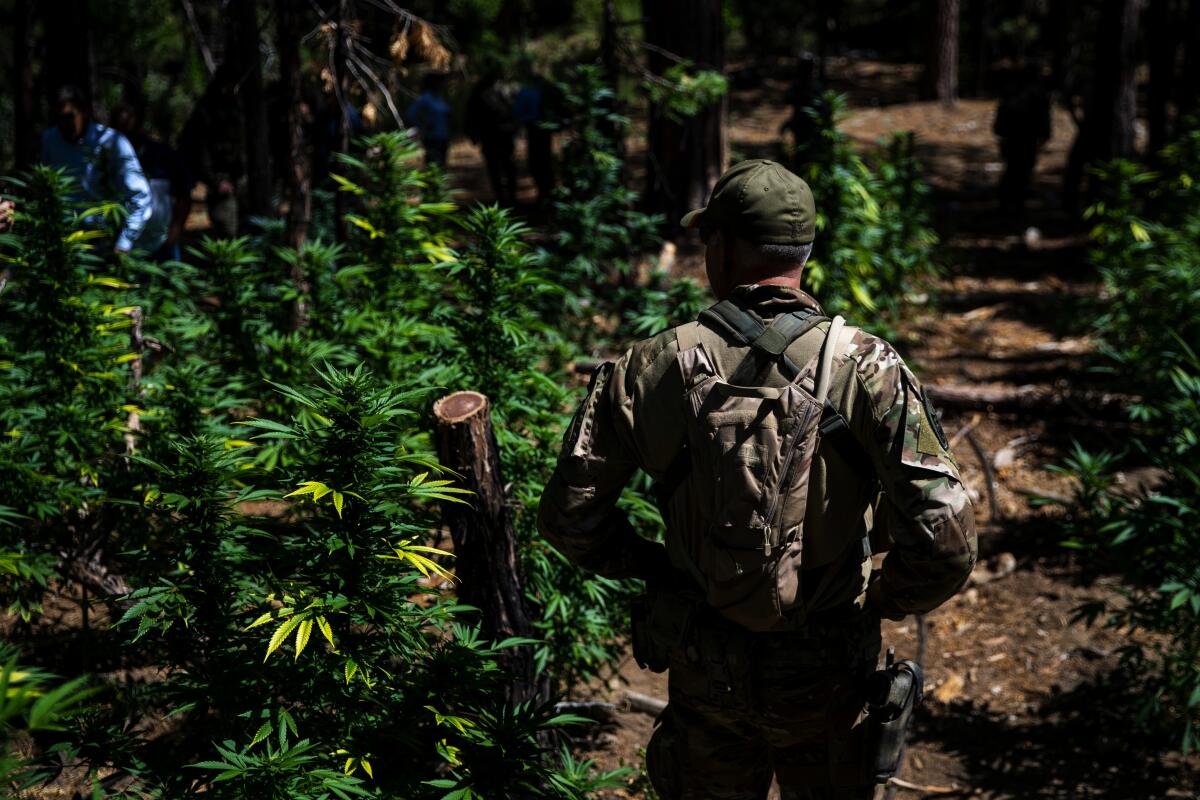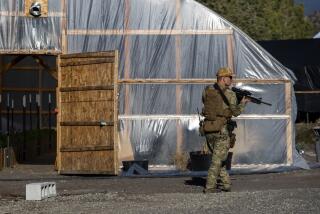Almost 1 million illegal marijuana plants seized in California

Three years after Californians decided to legalize and license marijuana farms, state law enforcement raids this year seized nearly 1 million pot plants from illicit grows, a jump from last year highlighting that the black market remains a persistent problem.
The just-concluded growing season saw the state’s main enforcement program conduct 345 raids of illegal grow sites throughout California and the eradication of 953,459 marijuana plants, up from 254 raids last year that seized 614,267 pot plants, state Atty. Gen. Xavier Becerra said Monday.
Law enforcement agencies working together in the Campaign Against Marijuana Planting program arrested 148 people and seized 168 weapons during this year’s raids, up from 52 arrests and 100 firearms confiscated during last year’s growing season.
“Illegal cannabis grows are devastating our communities,” Becerra said. “Criminals who disregard life, poison our waters, damage our public lands, and weaponize the illegal cannabis black market will be brought to justice.”
Growing marijuana was legalized by Proposition 64, which was approved by California voters in 2016. State residents 21 years and older could immediately grow up to six plants for personal use, while larger farms were required to get a state license starting Jan. 1, 2018, pay taxes and license fees and track every plant harvested and sent to pot shops.
But illegal pot farms have continued operating — California is the largest supplier of marijuana to the rest of the country, yet it is illegal to sell cannabis outside the state from licensed California farms. A new study by the research group New Frontier Data estimates that California produces 58% of the cannabis grown in the United States.
Becerra said the black market persists in part because criminal growers can sell marijuana more cheaplythan licensed growers because they don’t pay fees and taxes, or meet the costly environmental standards, that are required of licensed cultivators.
“The illicit cultivation of marijuana continues to be a major problem in California,” said Douglas Herrema, the manager of the Palm Springs field office for the U.S. Bureau of Land Management.
Since 1983, the Campaign Against Marijuana Planting program has targeted illegal cannabis grows on public land across the state. The program is a collaboration between the state Department of Justice, the state Department of Fish and Wildlife, local police agencies and federal agencies including the U.S. Forest Service.
CAMP is the state’s main coordinated enforcement effort, while other agencies have separately raided and seized illegal marijuana grows.
The figures reported Monday for the CAMP program do not include a case in which Kern County destroyed about 10 million marijuana plants grown on private property under the guise of industrial hemp.
The California National Guard provides air support, including helicopters, that helps agencies including the federal Drug Enforcement Administration spot and get to remote grow sites, said William D. Bodner, special agent in charge of the DEA’s Los Angeles office.
“These illegal marijuana grows destroy wildlife and wreak havoc on our land and water, ultimately impacting the communities where we live,” Bodner said during a news conference Monday with Becerra in Los Angeles.
Many of the illegal growing operations are the work of Mexico-based drug trafficking organizations in remote areas including national forest lands, officials said.
Gangs that operate illegal pot farms can be violent. Last month, an El Dorado County sheriff’s deputy was killed in a shootout with illegal growers at a site in Somerset in Northern California, the attorney general noted.
Law enforcement raids often find illegal farms that have dammed or diverted public streams and dumped dangerous pesticides including carbofuran, methyl parathion and aluminum phosphate, Becerra said.
“Those grows threaten our public safety and our public health and our environment,” Becerra said, noting that this year’s raids occurred in 35 of California’s 58 counties.
More to Read
Start your day right
Sign up for Essential California for news, features and recommendations from the L.A. Times and beyond in your inbox six days a week.
You may occasionally receive promotional content from the Los Angeles Times.







